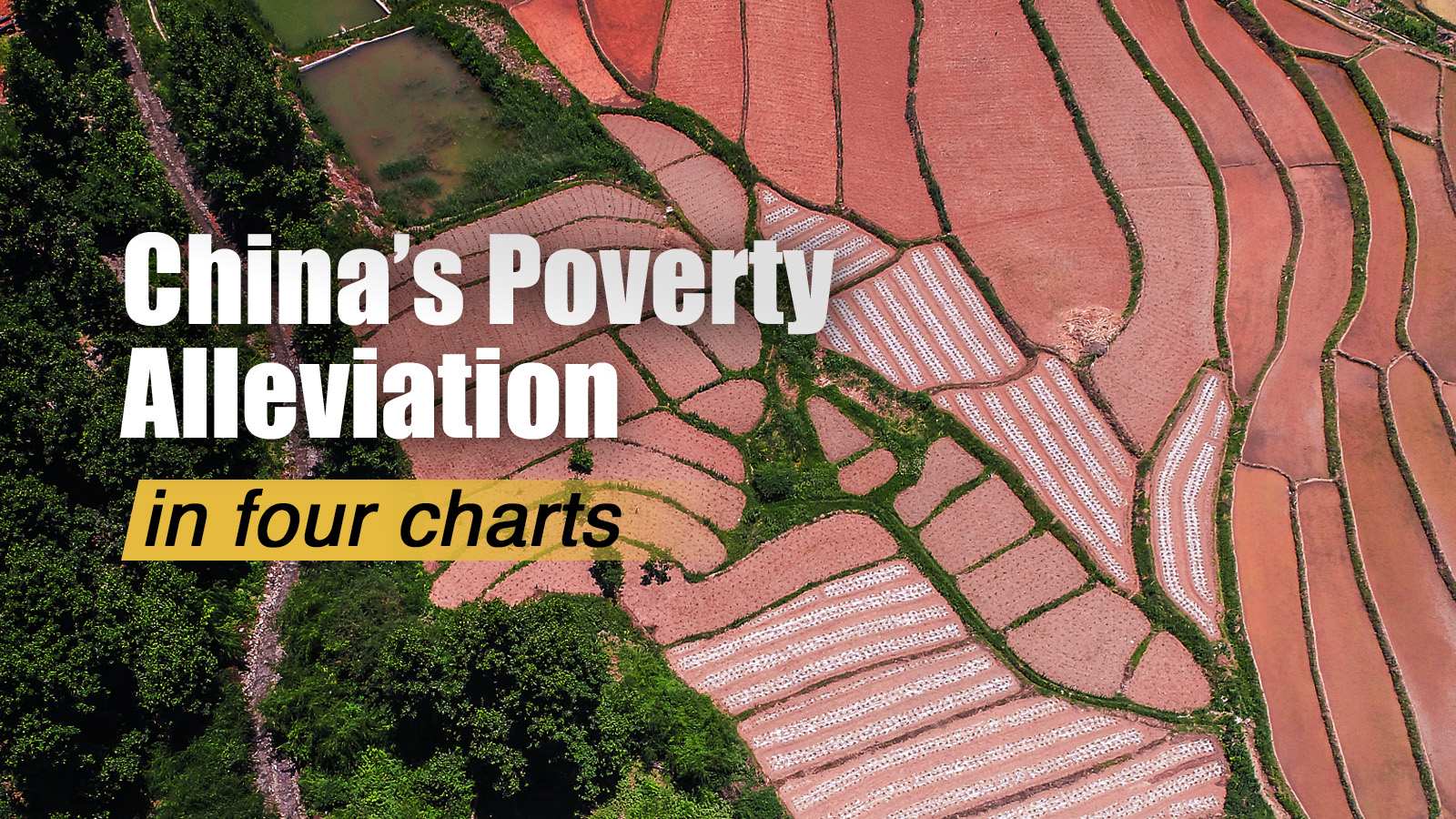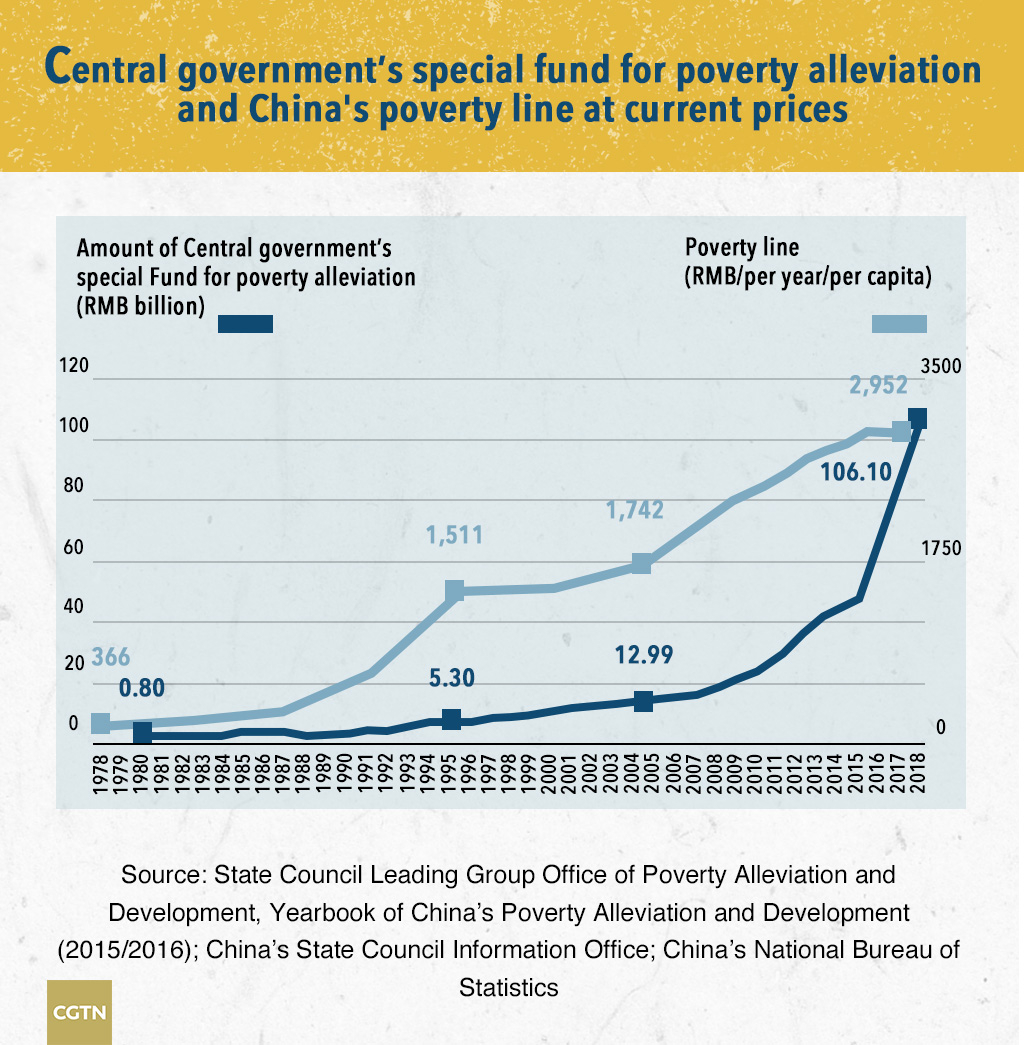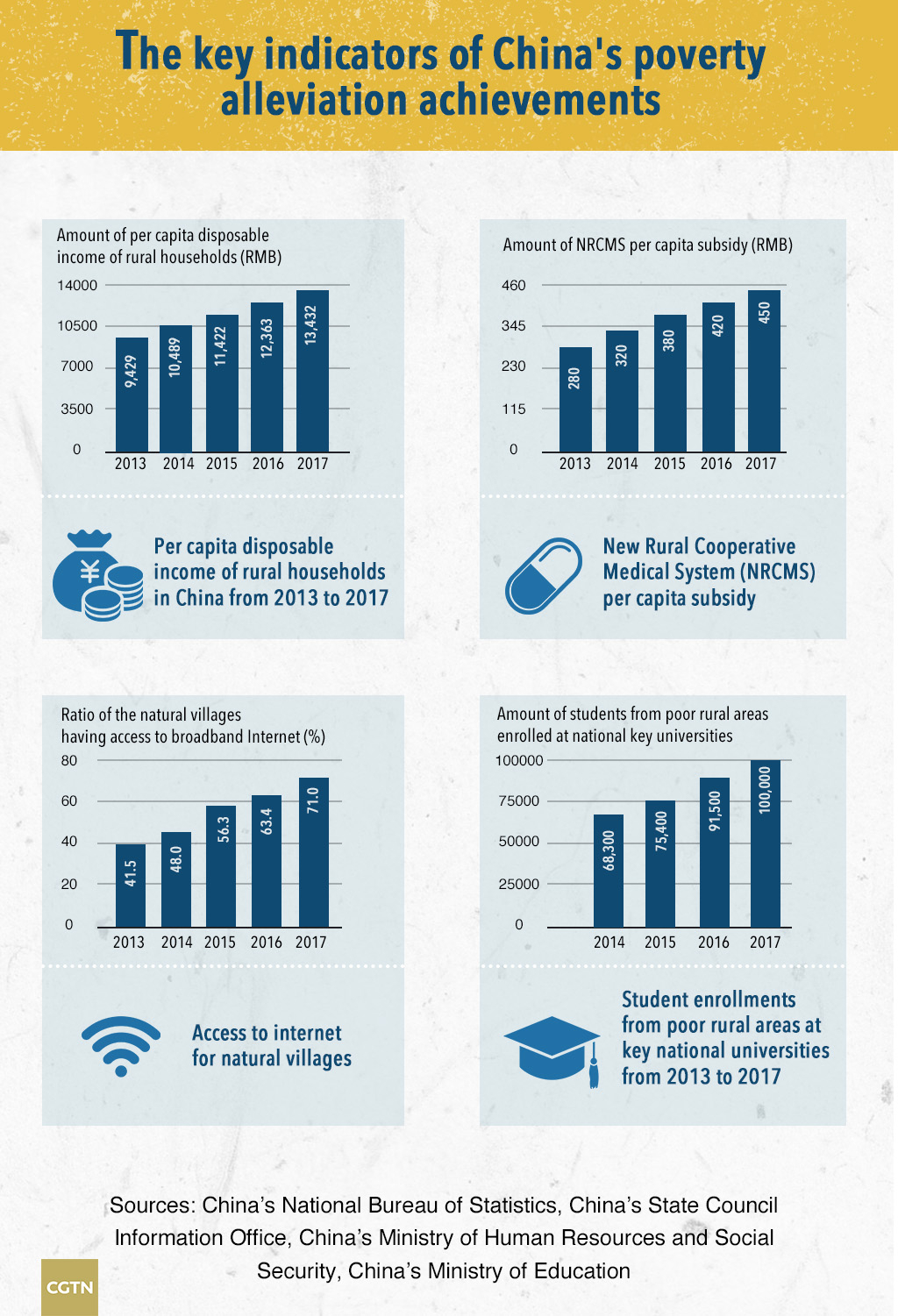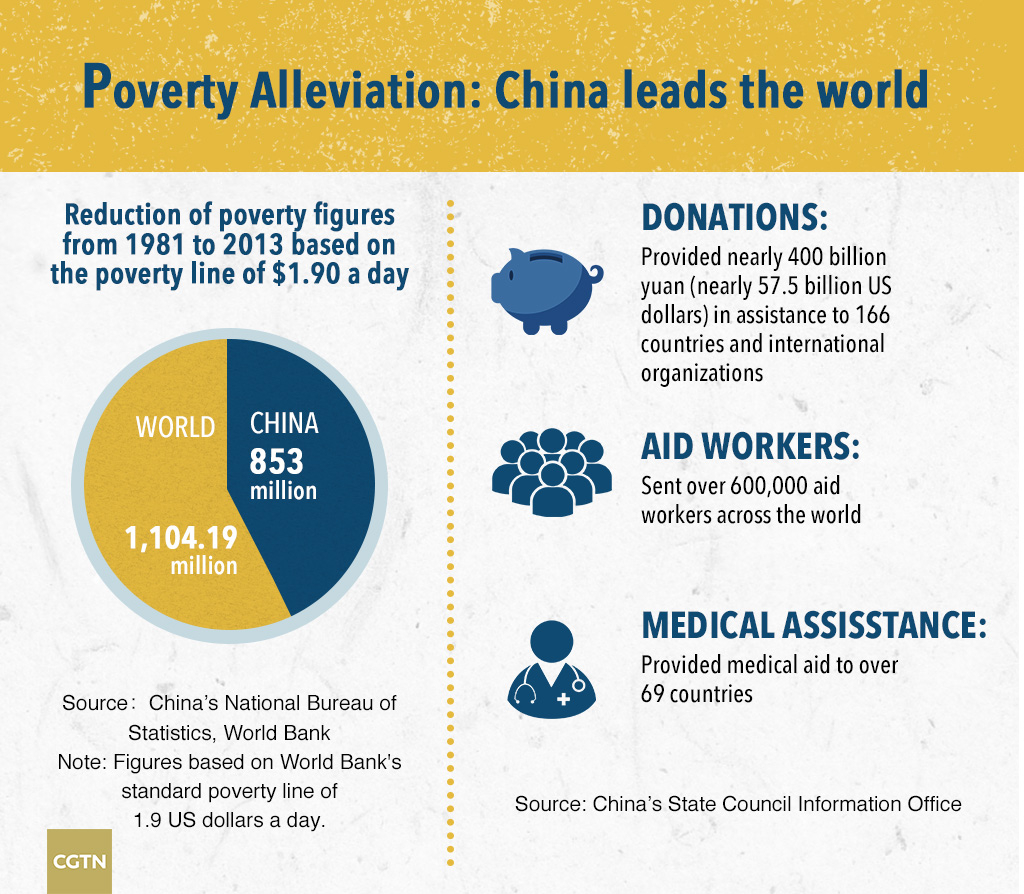
China
10:52, 17-Oct-2018
Four charts tell you China’s achievements in poverty alleviation
Updated
10:45, 20-Oct-2018
By Liu Yuyao, Li Jingjie

Wednesday marks China's fifth National Poverty Relief Day as well as the 26th International Day for the Eradication of Poverty.
China has made great achievements in poverty alleviation since the launch of reform and opening-up in 1978. Over the past 40 years, China has gone from one of the poorest countries in the world to the largest contributor to world poverty elimination, lifting more than 800 million people out of poverty.
Here are four charts to help you understand more about China's efforts to tackle poverty since reform and opening-up:
How many people live in poverty in China?

Over the past 40 years of reform and opening-up, the income level and living standard of rural residents have been continuously improved, and the impoverished population in rural areas has decreased dramatically.
As shown in the chart, China has brought 740 million rural people, nearly the combined population of the United States, Russia, Japan, Germany and the United Kingdom, out of poverty from 1978 to 2017, almost 19 million each year.
With the poverty incidence decreasing to 3.1 percent at the end of 2017, this indicator dropped 94.4 percentage points during the same period with an average annual decrease of 2.4 percentage points.
How much funds have been allocated by the Chinese government for the poverty alleviation program and where does China's poverty line currently stand?

Adequate financing is crucial for sustainable development. China established the central government's special fund for poverty alleviation in 1980, contributing to the country's poverty alleviation in a more productive and strategic way.
We can see from the chart above that the amount of special funds for poverty alleviation experienced steady growth from 1978 to 2005, followed by a dramatic surge in the next 13 years.
From 2014 to 2018, the government assigned special poverty alleviation funds amounting to 349.24 billion yuan (50.48 billion US dollars), with an average annual growth of 15.7 billion yuan.
With the development of the social economy and the improvement of people's lives, China has continuously adjusted the poverty line since 1978. The national poverty line in 2017 was set as 2,952 yuan (427 US dollars) per capita annually, and is more than eight times the amount of 1978.
What are the key indicators of China's poverty alleviation achievements?

Eliminating rural poverty is one of the main policy goals in China, and the country has made continuous efforts to help increase the incomes of the impoverished population, build rural infrastructure and provide public services such as health care and education.
As noted in the chart, the per capita disposable income of rural households in China grows continuously, climbing from 9,429 yuan (1,363 US dollars) in 2013 to 13,432 yuan (1,941 US dollars) in 2017.
Also, improvement has been made in the New Rural Cooperative Medical System (NRCMS) aimed at providing insurance for rural households, which started in 2003 and has covered over 97 percent of rural residents. The average annual growth of NRCMS per capita subsidy rose an average of 42.5 yuan each year from 2013 to 2017.
Internet access for villages also witnessed a rapid increase during the five years, hitting 71 percent in 2017, roughly 30 percentage points higher than in 2012. Furthermore, all towns and townships had broadband access and the number of Internet access ports exceeded 130 million in China by the end of 2015.
In addition, China eyes higher education's role in poverty relief and has made increased efforts to alleviate poverty through education. The Ministry of Education implemented the three special projects from 2012 to create a more level playing field for students from poor and rural areas to enter the key colleges and universities.
In 2012, national key universities admitted 10,000 students from rural and underdeveloped areas through the projects, and the enrollment increased tenfold to 100,000 in 2017 with a remarkable 21.3 percentage growth in 2016.
In 2012-2015, the Chinese government injected 83.1 billion yuan into compulsory education schools in poor areas, and 14 billion yuan to build 244,000 dormitory units for 300,000 teachers in remote rural areas, according to a white paper issued by China's State Council Information Office.
What about China's contribution to poverty elimination across the world?

Apart from achievements made in fighting poverty at home, China also leads the world in poverty eradication.
From the graphics above, we can see that the number of citizens China has raised from poverty accounts for 77.3 percent of the world's total from 1981 to 2013, based on World Bank's standard poverty line of 1.9 US dollars a day.
With the most people lifted out of poverty, China has led other countries to realize the UN Millennium Development Goal (MDGs) and devoted itself to helping other developing countries combat poverty.
Since the founding of the People's Republic of China in 1949, China has provided nearly 400 billion yuan to 166 countries and international organizations, sent more than 600,000 aid workers, provided medical assistance to 69 countries, and aided more than 120 developing countries in realizing the MDGs.
Even after these accomplishments, China is not stopping the fight. The country, planning to eradicate absolute poverty by 2020, continues to work toward eliminating poverty completely.

SITEMAP
Copyright © 2018 CGTN. Beijing ICP prepared NO.16065310-3
Copyright © 2018 CGTN. Beijing ICP prepared NO.16065310-3